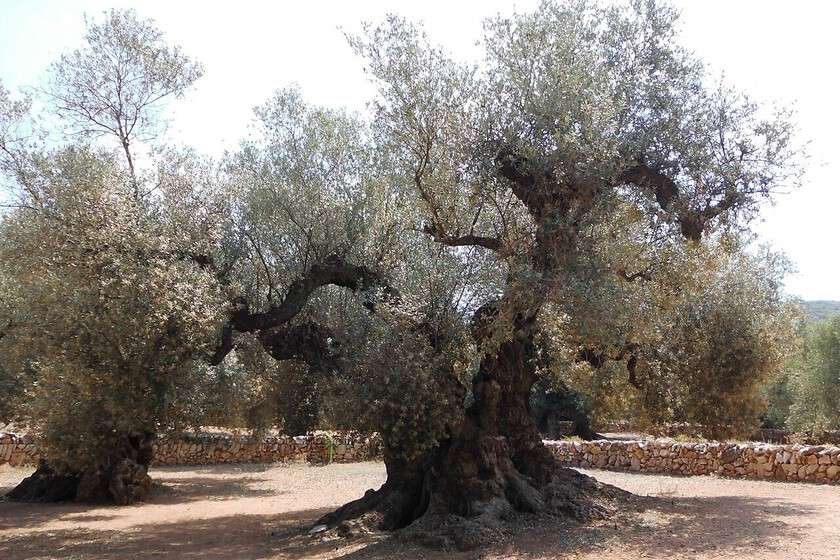If you leave Ulldecona heading towards La Galera, you will have to travel about four kilometers before finding, on the left, the entrance to the farm. There, among Santa Luca cherry trees, rowan trees and some carob trees, stands the Farga de Arin, ms 1700 to those of living history.
Where olive trees live for more than a thousand years.
La Taula del Snia, about twenty Valencian, Catalan and Aragonese towns, brings together the largest concentration of monumental olive trees in the world. We talk about 4,798 trees measuring more than 3.50 meters in perimeter 1.30 meters from the ground.
And, among all of them, La Farga stands out.
In 2015, a team of researchers from the Polytechnic University of Madrid led by Antonio Prieto, one of the greatest experts in dasomemetry in Spain, they came to the conclusion that La Farga was 1,701 years old. That is to say, there had been planted in the year 314 after Christin the time of Emperor Constantine I.
A living museum
In 1997, the Generalitat de Catalunya he declares Olivo as a “monumental tree” and, in 2006, it was recognized as the best monumental olive tree in Spain by AEMO (Spanish Association of Olive Municipalities).
But it was not until a few years later, when (after reaching an agreement with the owners, the Porta i Ferr family) got started the “Natural Museum of Millennial Olive Trees of Arín” that makes it possible to make tourist visits compatible with the conservation of the environment. Not only that, it has been a central element for the cataloging and protection of a heritage that for years was in danger of disappearance.
In 2016, Iciar Bollan released a film, “The Olive Tree“, which (among many other things) talked about the ‘trafficking’ of ancient trees in our country. The film is set, in fact, in Canet lo Roig, in the Taula del Snia.
The ages of the Earth
Despite the enormous problems that urban trees have in Spain, the truth is that the country has a mistreated, but interesting forest heritage. The only tree that can compete with the Farga is the Patriarca, a huge Canary cedar which is at least 1400 1500 years old. It is not very well known, because not even the Teide National Park had dated it with (more or less) precision until 2019.
In the Canary Islands, the most iconic tree was always the dragon tree of Icod de Vinos. An enormous tree that, although popular stories have given it 3,000 years old, is actually just over 800.
Something similar happens with the sequoias of the Royal Palace of La Granja de San Ildefonso in Segovia (or with the redwood of the Alhambra). They are enormous trees, but in this case their American origin reveals that their age cannot be that great. That does not mean that, as is the case with the Cabezín de la Sal park or the Porra avocado tree, they are not an incredible example of historical and natural heritage.
This does not happen with the Aragonese Carrasca de Lecina (the oldest oak in Spain at 1100 years old) or the Extremaduran La Terrona (the largest in Europe) or the iconic Cabra de Santo Cristo. Nor does it happen with the yews of Bermiejo, San Cristbal de Valdezuela or Rascafra. In these cases, there are many doubts about when they were planted because it is a topic too little studied.
And that is nothing more than the symptom of a problem: that in Spain it is still very difficult for us to understand the real value of forests, gardens and trees. It is a slow job, but little by little (absurdity by absurdity) it is moving forward.
Image | Herodotptlomeu
In Xataka | While avocado continues to cause problems in the south of Spain, a region is proposed as an alternative: Asturias

